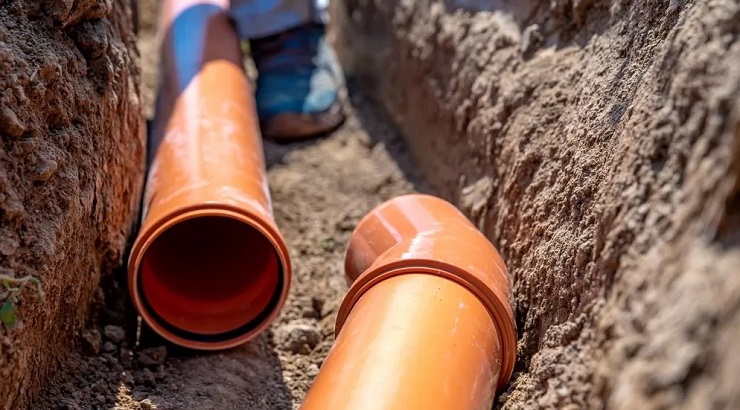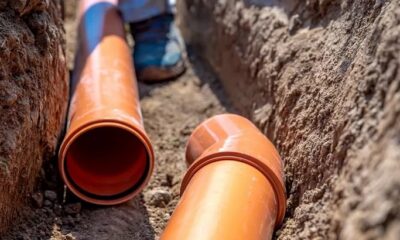Features
The ABCs of Drainage Construction
Everything you need to know about construction of drains.

Drainage construction is the process of planning, designing, and installing systems that remove excess water from buildings, roads, landscapes, and other structures.
It typically involves the installation of specialized channels and pipes to redirect water from an area to prevent issues like flooding, erosion, and potential damage.
The construction of drainage can be as simple as laying a single pipe to get rid of rainwater from a building, or as complex as placing a network of pipes and channels to redirect water from highways.
Types of drainage systems
There are three broad types of drainage systems: surface drainage, subsurface drainage, and storm drainage.
Surface drainage involves the removal of excess water from the ground surface, while subsurface drainage focuses on the removal of water from the soil.
On the other hand, storm drainage is a system of infrastructure designed to manage and control the flow of excess water during heavy rainstorms.
The three drainage options can be classified into other subcategories.
Here are the four main types of drains:
1. Grated trench drains: These are easily the most popular types of drainage systems. The drains use a system of trenches and grates to redirect water to an underground pipe. The pipe then redirects water to a water outlet.
2. French drains: These types of drains are installed in residential projects to redirect water away from homes and lawns. The drains use a series of pipes to steer water runoff away from the building and guide it towards the sewage system.
3. HDPE drains: High-density polyethylene (HDPE) drains are prefabricated drainage systems that work more or less like grated trench drains. However, unlike trench drains, you do not have to build HDPE drains. You simply need to put them in the ground and design around them.
4. Slot drains: These systems work a lot like grated trench drains, except that they do not require the grate. Thanks to their slim designs, slot drains are generally installed into the floor or ground without the need for a covering.
Slot drains are made from stainless steel to avoid corrosion and are common in food preparation areas and buildings that require high-quality sanitation.
RELATED: How to Build a House That Can Withstand Any Storm
Drainage construction
The construction of drains requires careful planning and implementation.
The task begins with a careful selection of materials after taking into consideration the internal equipment and the ecological setting of the structure.
Here are the steps to follow during the construction of the drain.
1. Study the site
Begin by surveying the site to determine the most appropriate type of drainage system. Assess the rainfall in the area, the type of soil, and the slope of the land.
This information will help you determine the most suitable type and material for the drainage system that matches the structure.
2. Choose a layout plan
After deciding on the type of drainage system, it is time to select a layout plan for the drain. This involves choosing the sites for the drainage channels and pipes and mapping out the route that the water will follow to reach the drainage system.
3. Excavate the site
Excavate the site for the drainage system to the required width and depth. The channel should be leveled and sloped in the direction of the drainage system.
4. Install the pipes
After finishing the excavation, the placement of pipes can begin. Ensure the pipes are buried at the appropriate depth. It is important to seal all the joints with a suitable sealant to avoid any water leakage.
5. Install drainage channels
Drainage channels can be built using stone, concrete, or alternative construction materials. Their installation should adhere to the suitable slope and level requirements to guarantee the proper flow of water.
6. Install outlets
Outlets help collect water from the channel and direct it into the pipes.
They should be installed in the correct place and at the right height to guarantee the proper flow of water. This simplifies drainage even during heavy rainfall.
7. Cover the drainage system
Placing a cover over the drainage system marks the final step in drainage construction. This helps prevent debris from entering and blocking the system.
A layer of gravel can be placed on top of the drainage channels to enhance water flow while providing protection to the system.












